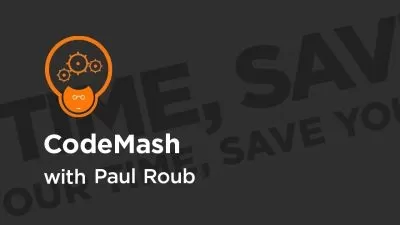Master Drools - from Intermediate to Expert
Juhan Aasaru
4:32:44
Description
Speadsheet decision tables, Complex Event processing, rule templates, slidingwWindows, all with executable code examples
What You'll Learn?
- How Drools works internally and what to keep in mind for writing faster performing rules
- Create spreadsheet decision tables and spreadsheet templates
- What is Complex Event Processing and how Drools handles it
- How to use rule templates (DRT or Freemarker) and run dynamically defined DRL
- Understand different Drools running modes (active/passive, cloud/stream, sequential)
Who is this for?
More details
DescriptionIn this course we learn the following topics:
How Drools internal algorithm Phreak works
Using spreadsheet decision tables to create Drools rules
Using templates for creating rules and feeding data into them from spreadsheets and other tabular data sources
Complex event processing in Drools
difference between fact and event
declaring facts and events in Java and inside DRL code
different rule execution modes (active/passive, cloud/stream, sequential)
time and length based sliding windows
entry-points
global variables
timers
For all the examples I have created runnable example code - so you can follow the same steps shown in the video and you are encouraged to try to make changes to the examples and run yourself
I use Apache OpenOffice for editing XSL files so you don't need to use a paid program (like Excel) but you can if you want
This is a follow-up course for my previous corse Master Drools -Â Drools for beginners. I got a lot of feedback for that course (thank you everyone who took time to leave it) and this course is based on that feedback.
In this course if I meet some language construct (forall, collect, not, from) that has been covered in the previous course - then I briefly try to explain it, but it is highly recommended for you to first go through the begninner course because it covers these topics in more depth and moves step-by-step from easier topics to more difficult ones.
Who this course is for:
- Anyone writing rules in Drools DSL and wants to become better at it
- Anyone who is considering using Drools for writing rules or processing stream of events
In this course we learn the following topics:
How Drools internal algorithm Phreak works
Using spreadsheet decision tables to create Drools rules
Using templates for creating rules and feeding data into them from spreadsheets and other tabular data sources
Complex event processing in Drools
difference between fact and event
declaring facts and events in Java and inside DRL code
different rule execution modes (active/passive, cloud/stream, sequential)
time and length based sliding windows
entry-points
global variables
timers
For all the examples I have created runnable example code - so you can follow the same steps shown in the video and you are encouraged to try to make changes to the examples and run yourself
I use Apache OpenOffice for editing XSL files so you don't need to use a paid program (like Excel) but you can if you want
This is a follow-up course for my previous corse Master Drools -Â Drools for beginners. I got a lot of feedback for that course (thank you everyone who took time to leave it) and this course is based on that feedback.
In this course if I meet some language construct (forall, collect, not, from) that has been covered in the previous course - then I briefly try to explain it, but it is highly recommended for you to first go through the begninner course because it covers these topics in more depth and moves step-by-step from easier topics to more difficult ones.
Who this course is for:
- Anyone writing rules in Drools DSL and wants to become better at it
- Anyone who is considering using Drools for writing rules or processing stream of events
User Reviews
Rating
Juhan Aasaru
Instructor's Courses
Udemy
View courses Udemy- language english
- Training sessions 47
- duration 4:32:44
- Release Date 2023/02/14











